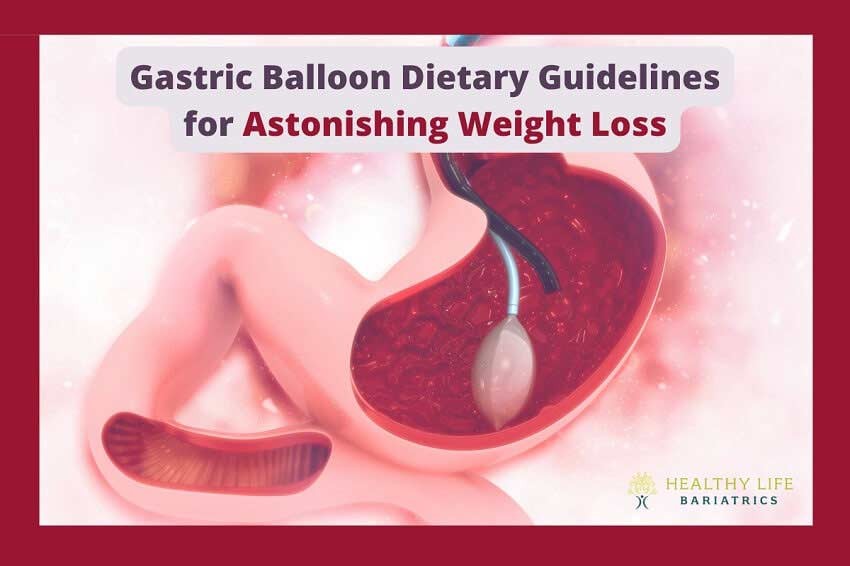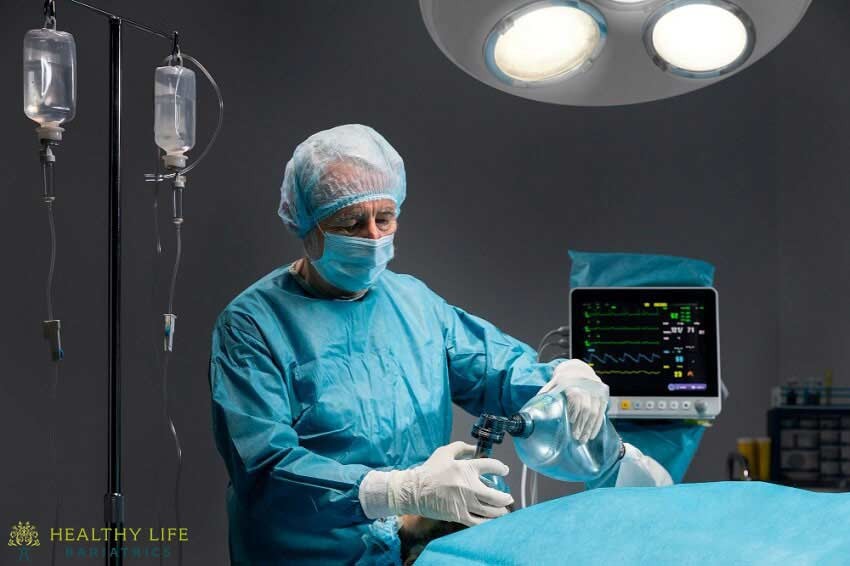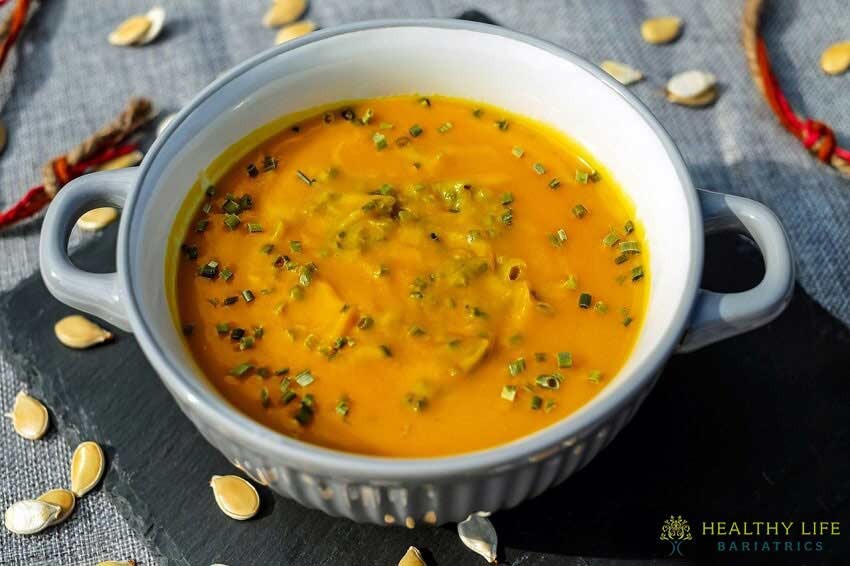
Losing weight becomes nearly impossible when you have reached the classification of obese or morbidly obese. Hence, to deal with this challenging situation of obesity, you can go with the method of gastric balloon.
Bariatric surgery aims to help those who are obese lose weight safely and effectively.
There are a few different types of bariatric surgeries, each with pros and cons.
The gastric balloon is one of them. This reversible, safe, and effective bariatric technique can help you lose weight quickly, giving you a unique opportunity to reclaim your health.
To succeed with the gastric balloon, you must alter your lifestyle.
In addition to moving your body with regular exercise, your bariatric surgeon will recommend that you eat sensibly while you have the gastric balloon installed.
But what does sensible eating imply? And what does having a gastric balloon installed mean?
This post will seek to answer both those questions and more.
Before we get to the dietary guidelines necessary for gastric balloon success, let’s clear up the first question: What is a gastric balloon, and how does it work?
The intragastric balloon (IGB), also commonly referred to as a stomach balloon or gastric balloon, is an inflated medical prosthesis once the device is implanted in your stomach.
The balloon itself is soft and durable.
Once inflated, the device takes up room inside the stomach cavity, preventing you from overeating.
The gastric balloon procedure is an alternative to bariatric surgery, most of which are permanent.
Whereas surgeries like the gastric sleeve and gastric bypass entail the removal of a majority of your stomach tissue, the gastric balloon leaves your stomach intact.
During those other surgeries, the remaining stomach tissue is configured into a sleeve shaped like a banana. This allows your body to restrict how much you eat, leading to rapid and safe weight loss.
Since the gastric balloon is reversible, you can adjust the size at the end of six months or install another balloon. Some bariatric patients opt to undergo more advanced surgery at the time of the balloon removal. This is where a transition surgery, such as a gastric balloon to gastric sleeve surgery, will be performed.

The gastric balloon is installed using endoscopy. It is an outpatient procedure that involves sedation, so you should plan to have someone drive you home after the procedure is finished.
Once you are sedated, the bariatric surgeon will insert a catheter down your throat. This thin tube will extend down your esophagus and into your stomach.
An endoscope, a flexible tube with a camera attached, is inserted into the tube along with the deflated balloon.
The camera on the scope lets your doctor see the balloon on a 3D monitor.
The balloon is nestled into your stomach cavity before it is filled with saline until it achieves the desired size and shape.
The procedure takes around thirty minutes, and you’ll usually be sent home the same day.
The gastric balloon gives patients access to fast weight loss, whereas losing weight may have been difficult or impossible before.
Most excess weight drops within the first four months of gastric balloon treatment.
With the gastric balloon procedure, you can expect to lose about fifteen percent of your body weight.
The more you stick to the gastric balloon dietary guidelines, the more successful you’ll be.
Let’s get to those guidelines now.
The dietary guidelines for the gastric balloon are separated into phases.
You should maintain each phase for at least three to five days.
You’ll want to ensure your body feels comfortable before switching to a new eating method each time.
You will be placed on a clear liquid diet for three to five days after the gastric balloon placement.
The purpose of this phase is to keep you hydrated.
Your doctor will help you set a hydration goal, such as drinking forty-eight to sixty-four or more ounces of clear liquids daily.
While on this diet, stick to water, tea (unsweetened), and sugar-free beverages.
You will be advised as to which foods you should keep on hand. For example, if you drink juice on this diet, you must ensure it is 100% fruit juice with zero added sugar. You can then dilute the juice by half-water and half-juice to further reduce the natural sugar intake.
When drinking tea in substantial amounts, stick with decaffeinated versions. Doing so can help you avoid dehydration. Tea is acidic. Keep this in mind, as drinking too much can lead to heartburn or acid reflux.
You will be given a list of approved and banned liquids to make transitioning into Phase 1 of the gastric balloon diet easier to manage.
Approved liquids include fruit juice, broth, no-sugar coconut water, Crystal Light, popsicles (sugar-free), gelatin (sugar-free), and water (or ice chips).
Drink these liquids slowly to avoid nausea. Start with a sip, wait a minute, then take another. That way, you can gauge your comfort as you continue.
Liquids to avoid on the gastric balloon diet include carbonated beverages, sugary drinks, citrus juices, tomato juice, alcohol, and caffeine drinks (including energy drinks).

After completing the clear liquid diet, you can move on to the next phase, which is to proceed to thick and pureed liquids.
You’ll have an easier time with this phase if you have a blender or food processor to puree the foods before you drink them.
The approved list of foods for Phase 2 includes protein shakes (pre-made or using protein powder), Greek yogurt, milk (dairy, coconut, almond, etc. – unsweetened), V-8, blended soups, pureed fruits/vegetables, and sugar-free pudding.
Foods to avoid in Phase 2 of the gastric balloon diet include foods with large chunks, desserts, and carbonated beverages.
You will begin this phase seven to ten days after the placement of your gastric balloon. This is where you can introduce soft foods into your diet plan.
You know a food is soft if it can be mashed with a fork. These are the types of foods you should stick to while in Phase 3.
These foods include beans, cottage cheese, ricotta cheese, string cheese, soft fish, canned tuna, chicken, avocado, scrambled eggs, crab, mashed vegetables, deli meat, and tofu.
At this stage, you finally get to transition back to normal foods. You are encouraged to add variety to your diet plan, including various fruits and vegetables.
Your doctor will advise you to stick to 1000 to 1200 calories daily.
You can use calorie and macronutrient apps to help you calculate your allotments each day.
Overall, you will want to aim for a macronutrient breakdown that looks like this:
Protein: 75g to 105g
Carbohydrates: 75g (50g for faster results)
Fat: 50g
Sugar: Less than 25g
Focus on filling your plate with lean protein sources and non-starchy vegetables. Don’t forget to include a bit of fat, but not too much.
You are also encouraged to choose fruits, whole grains, and beans, but only in moderation, and always paired with protein if possible.
If you can stick with this diet long-term, you are well on your way to fast weight loss success with the gastric balloon!

No one expects you to be perfect as a gastric balloon patient. Transitioning to each diet will take some time, and you may stumble here or there.
The idea is to consider the diet a long-term solution, something you can adapt and get used to.
Here are some tips to make the diet easier to adopt.
Aim to eat tiny meals and snacks throughout the day instead of three big meals: breakfast, lunch, and dinner. For best results, eat three small meals and two healthy snacks.
Once per day, drink a pre-made or powdered protein shake. This can count as one of your snacks or meals.
Do your best to pair fruits and grains with protein. This helps you build muscle, which is excellent for fat loss and overall health.
Don’t let yourself go too long without eating something. It’s best to eat every two or three hours to keep yourself satiated and your energy levels high.
Drink a minimum of forty-eight ounces of water each day.
Try to ignore foods on the banned list. These include sweets, processed foods, and doughy foods. The latter can stick to the gastric balloon, giving you bad breath.
Your doctor can advise you on which nutritional supplements to take to improve your health. Stick to regular vitamin tabs and not gummies, which can contain sugar.
Use a calorie or macro counting app to track your food intake. You can also use a hand-written journal if you prefer.
No one is asking you to live like a monk, but try to limit how much alcohol you drink. The empty calories will only hold your weight loss efforts back.
Watch your posture when eating and drinking your meals on the gastric balloon diet. When sitting, sit tall and don’t slouch. This helps your balloon position properly and can also improve your food tolerance.
Get used to stopping your food consumption whenever you feel full, even if food is left on your plate. You can save the excess for your next meal in a few hours.
Avoid eating at least three hours before it’s time to sleep. If you feel discomfort while sleeping, propping yourself up with a pillow can sometimes help.
Want to learn if the gastric balloon procedure might be right for you? This fast, effective weight-loss method may be ideal if you are in good health and have a desire to reclaim your health.
Not only could you finally lose the excess pounds, but bariatric procedures can also effectively treat obesity comorbidities like high blood pressure, type 2 diabetes, and osteoarthritis.
You are scheduling a consultation with world-renowned bariatric surgeon Dr. Babak Moein by calling Healthy Life Bariatrics, your home for weight loss in Southern California. (310)861-7844.